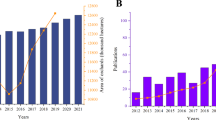Abstract
Globally, robots are being used in garment factories according to their advantages such as high precision, flexibility, and productivity. However, it is difficult for robots to deal with deformable objects such as cloths and strings automatically. The main tasks of such robots are to recognize a deformable object and to pick up and place it at a designated position automatically. The deformable character of cloths seems a main hindrance for automatic handling by robots, especially if the cloth is unique. In this paper, a cloth handling robotic system for unique cloths is proposed with consideration of verification of illumination tolerance. This robotic system comprises two main portions: the first portion generates a model of cloths using an image taken by a single camera, and the second portion estimates the relative pose of cloth appeared in the view of two cameras using the generated model. In our cloths’ pose estimation, the photo-model projected from 3D to 2D is used, where this system does not need defining the object’s size, shape, design, color, and weight. The illumination tolerance of the proposed system under different light conditions of different light sources was verified experimentally for evaluating the proposed system from the view point of practicality. The fluorescent light and the light-emitting diode (LED) light are used in this experiment, having confirmed that the proposed system can recognize cloths in condition that the light environments have varieties.























Similar content being viewed by others
References
Awai M, Shimizu T, Yamashita A, Kaneko T (2011) Person following and autonomous returning by mobile robot equipped with monocular camera and laser range finder. In: Proceedings of the 2011 JSME Conference on Robotics and Mechatronics, pp 2A1-H10 (in Japanese)
Ishikawa M (1998) Sensor fusion system-mechanism for integration of sensory information. J Robot Soc Jpn 6(3):251–255 (in Japanese)
Matsuyama T, Kuno Y, Imiya A (1998) Computer vision: technical review and future view. N Technol Communication, pp 85–95. (in Japanese)
De Luca A, Oriolo G, Giordano PR (2007) On-line estimation of feature depth for image-based visual servoing schemes. In: Proceedings of 2007 IEEE International Conference on Robotics and Automation (ICRA2007), pp 2823-2828
Hashimoto K, Kimura H (1995) Visual servoing-nonlinear observer approach. J Robot Soc Jpn 13(7):986–993
Ono K, Ogawa T, Maeda Y, Nakatani S, Nagayasu G, Shimizu R, Ouchi N (2013) Recognition and bin-picking of coil springs by stereo vision. Trans Jpn Soc Mech Eng Ser C 79(804):2769–2779 (in Japanese)
Son-Cheol Yu (2001) Tamaki Ura. Teruo Fujii, Hayato Kondo, Navigation of autonomous underwater vehicles based on artificial underwater landmarks. In: OCEANS, MTS/IEEE Conference and Exhibition, vol 1, pp 409–416
Yinxiao L, Chih-Fan C, Peter KA (2014) Recognition of deformable object category and pose, Robotics and Automation (ICRA). In: IEEE International Conference, pp 5558-5564, Hong Kong, May 31-June 7 2014
Funakubo R, Phyu KW, Tian H, Minami M (2016) Recognition and handling of clothes with different pattern by dual hand-eyes robotic system. In: IEEE/SICE International Symposium, pp 742-747
Funakubo R, Phyu KW, Hagiwara R, Tian H, Minami M (2017) Verification of illumination tolerance for clothes recognition. In: The Twenty-Second International Symposium on artificial life and robotics 2017 (AROB 22\(^{nd}\) 2017), B-Con Plaza, Beppu, Japan, January 19-21
Phyu KW, Cui Y, Tian H, Hagiwara R, Funakubo R, Yanou A, Minami M (2016) Accuracy on photo-model-based clothes recognition. In: SICE Annual Conference, Tsukuba, Japan, September 20-23 2016
Gee A, Cipolla R (1994) Determining the gaze of faces in images. Image Vis Comput 12(10):639–647
Huang C-Y, Camps OI, Kanungo T (1997) Object recognition using appearance-based parts and relations. In: Computer vision and pattern recognition, IEEE Computer Society Conference on, pp 877-883, 1997
Yu F, Minami M, Song W, Zhu J, Yanou A (2012) On-line head pose estimation with binocular hand-eye robot based on evolutionary model-based matching. J Comput Inform Technol 2(1):43–54
Myint M, Yonemori K, Yanou A, Lwin KN, Minami M, Ishiyama S (2016) Visual Servoing for underwater vehicle using dual-eyes evolutionary real-time pose tracking. J Robot Mechatron 28(4):543–558
Lwin KN, Yonemori K, Myint M, Naoki M, Minami M, Yanou A, Matsuno T (2016) Performance analyses and optimization of real-time multi-step GA for visual-servoing based underwater vehicle. In: Techno-Ocean, pp 519-526, 2016
Minami M, Agbanhan J, Asakura T (2003) Evolutionary scene recognition and simultaneous position/orientation detection, in Soft Computing in Measurement and Information Acquisition. Springer, Berlin, pp 178–207
Author information
Authors and Affiliations
Corresponding author
Additional information
This work was presented in part at the 22nd International Symposium on Artificial Life and Robotics, Beppu, Oita, January 19–21, 2017.
About this article
Cite this article
Phyu, K.W., Funakubo, R., Hagiwara, R. et al. Verification of illumination tolerance for photo-model-based cloth recognition. Artif Life Robotics 23, 118–130 (2018). https://doi.org/10.1007/s10015-017-0391-0
Received:
Accepted:
Published:
Issue Date:
DOI: https://doi.org/10.1007/s10015-017-0391-0




